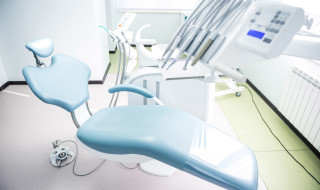 Eugene O’Malley, general manager at Hague Dental, explains what to look for when buying a dental chair, for the clinician and the patient.
Eugene O’Malley, general manager at Hague Dental, explains what to look for when buying a dental chair, for the clinician and the patient.
For the clinician
Reliability – downtime is the enemy and lost revenue is hard to recover and can have long-term detrimental effects on practice profitability. When researching your chair find out what products have a large and well established market share. The reason companies have built up a large market share is normally consistent with long-term customer satisfaction and loyalty to a brand based on a trouble free ownership experience.
UK based warehouse – it is also important to make sure the manufacturer you choose has an established long-term presence in the UK market and that their warehouse carries suitable quantities of spare parts. These parts should be able to be shipped instantly to prevent downtime and lost revenue to your practice if a fault occurs.
Ask your peers – don’t be afraid to ask your dentist friends their experience with different brands. If you have selected a brand then ask your friends who may have that brand what the ownership experience has been like. Always make sure if you are asking your friends about their experience that they have followed a regular maintenance protocol.
There isn’t a lot of point asking someone who neglects their equipment about its performance.
Choosing a dental equipment partner – there are many different suppliers of dental equipment so it will be important for you to select the one who meets the exacting criteria you may require.
Points to look out for
The following is a list of things to look out for in the optimum equipment dealer:
- A large team of well-trained technicians who are trained to the highest manufacturer standards
- The office location must be no more than three hours from your practice to avoid unnecessary downtime
- A large well-equipped dental showroom with the markets’ leading brands represented and offering a choice for all budget levels. A large showroom shows commitment to enhancing the customers’ experience and proof of significant long-term commitment to the marketplace it serves
- Experts to help manage the project from start to finish and offer advice that could save both time and money
- The equipment supplier must have long-term relationships with building companies that specialise in building dental surgeries. These building companies must work within the guidelines of the dental dealer and work in conjunction with the sales person and the project management team
- Beware a company that rushes you to sign an order rapidly. If a deal is sound and the dealers business ethos is correct there should be no need to rush.
Clinical needs – below is a list of important points in helping you to achieve optimum clinical performance for the operator:
- When choosing your chair make sure it has a double articulated headrest to maximise vision to difficult areas of the oral cavity
- Make sure the back profile of the chair is slim so the operator can get very close to the patient without the backrest blocking access to the patient’s head
- A head rest that can be removed for young children so their heads can rest on the back cushion allowing full support for the child’s spine but still giving the operator greater access
- A headrest that can be reversed to allow access behind the chair for wheelchair bound patients
- It is important to make sure there is no gap between the back rest and the seat cushion when the chair is in supine position. If there is a gap the patients lumber will fall into the gap and cause constant interruption during treatment for patient re-adjusting
- A head rest that can be extended for tall patients to aid comfort during procedures and avoid patient’s feet hanging over the toe board of the chair. This can be very uncomfortable during long sessions and again lead to patient adjustment
- Armrests that can be moved out of the way so better access can be achieved by the operator to the oral cavity.
For the patient
- A chair that has a smooth movement and doesn’t startle the patient in transit. Many patients are already nervous when they enter the chair adding a jerky uncomfortable ride will only add to their fears
- A chair that has the option of ultra soft upholstery that enhances the patient experience during long specialist treatments like endodontics and implant dentistry
- A chair that fits all body shapes. With patients increasing in height and weight it is important that your chair can lift heavy patients comfortably and the patient still be accessible for all members of the dental team
- The chair must have safety features that allow the chair to be stopped instantly if the patient has a serious health issue or has a panic attack during transit. Most quality makes have safety switches that can be activated almost instantly and avoid further exacerbation of a trauma issue.
I hope some of these points help you in your choice of chair and lead to a trouble free ownership experience.
Please remember Rome wasn’t built in a day. Take your time and do the proper research and always keep in the back of your mind, most dentists that purchase a chair will use that chair for at least 10 years of their working life. This equates to 10 years x 48 weeks x 40 hours = 19,200 hours.
Please call 0800 298 5003 to speak with the Hague team or visit www.haguedental.com.


